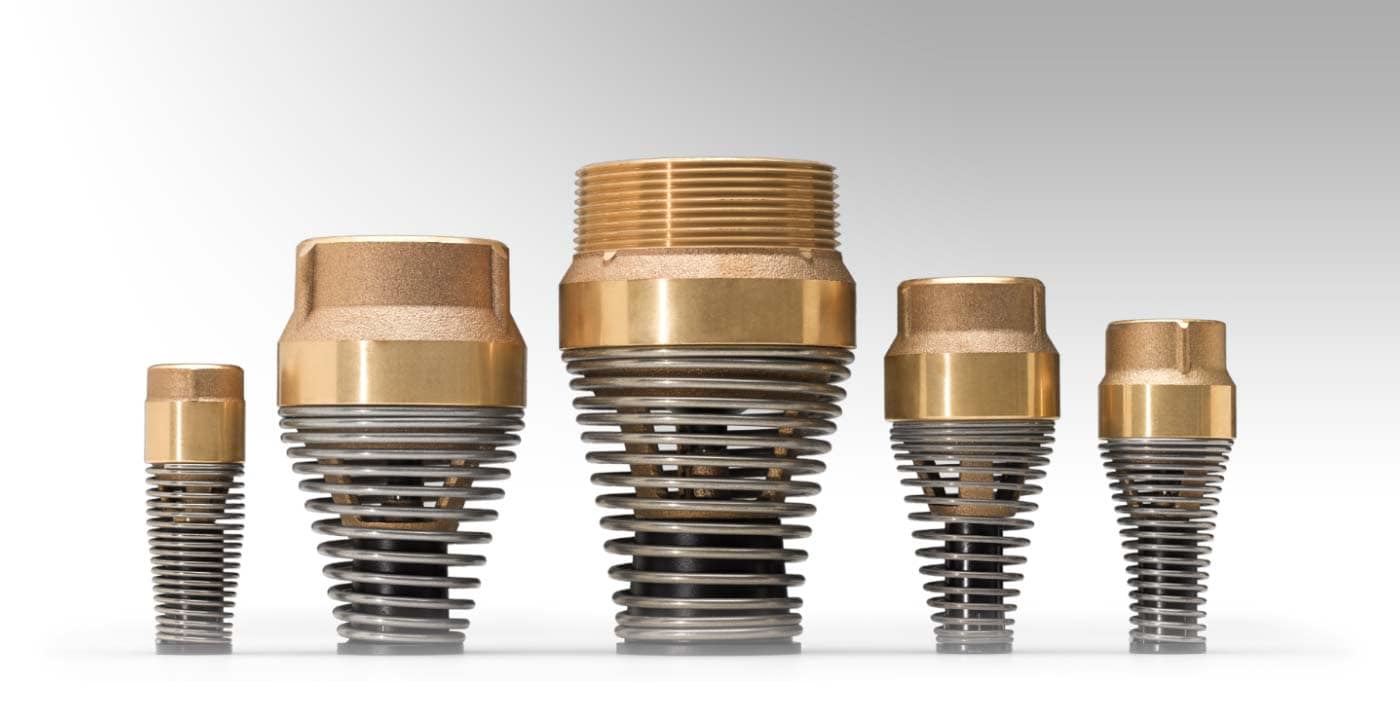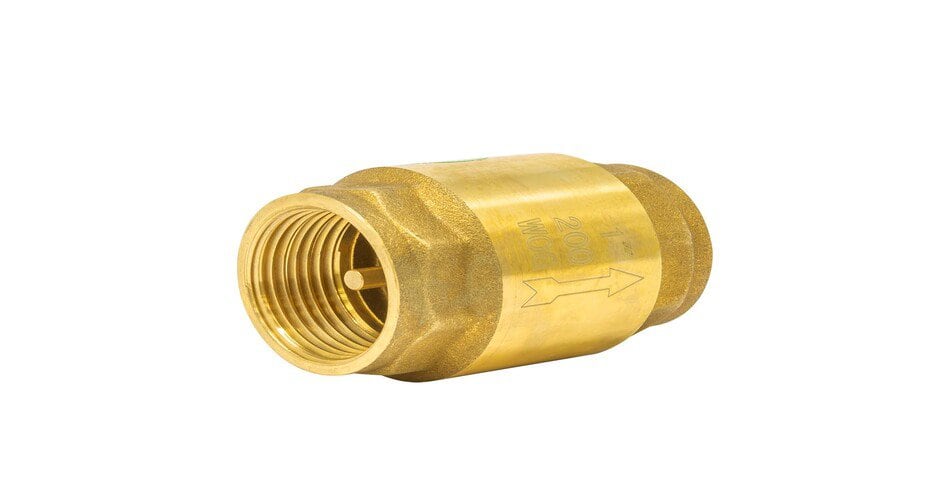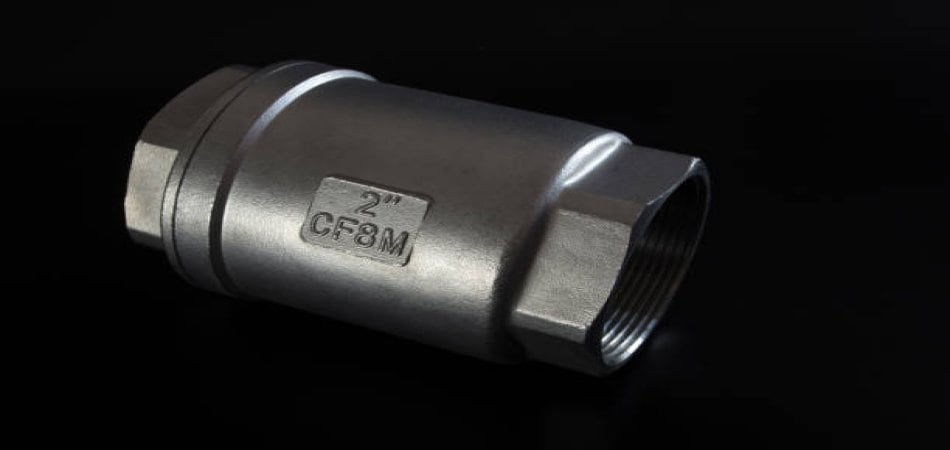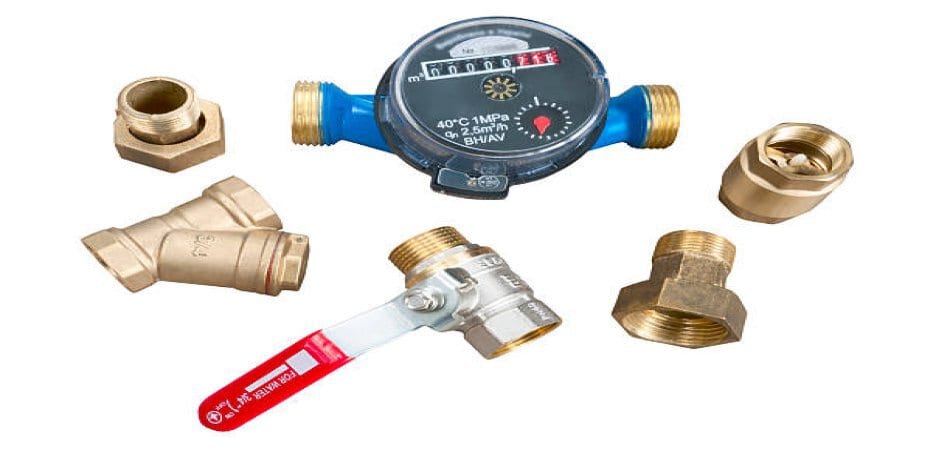Valves are commonly applied in various pump systems, such as wells, oil refineries, power generation systems, etc. They come in a wide range, such as double-check valves or well-foot valves. Such small components are quite easy to fix on any system and play an essential role in keeping the fluid flow in one direction only.
It is not just about the flow; they are great at preventing the breakage of the pumping system by absorbing the pressure and hammering effect. Here, we will evaluate the working mechanism of these valves and pinpoint all the important factors for their optimum performance. So stay with us.
Understanding Check Valves:
A check valve is crucial for controlling fluid flow in one direction, preventing backflow in various applications from household to industrial systems. It operates autonomously, using fluid pressure and flow to function, eliminating the need for manual intervention. Various designs, including ball, swing, and diaphragm types, cater to specific needs, ensuring compatibility with diverse operating conditions. These valves are key to maintaining system integrity by preventing contamination and damage due to reverse flow. For example, they are used in water heating systems to stop hot water from flowing backward and in pumping stations to prevent water backflow, which could harm pumps. Selecting the appropriate check valve enhances system efficiency and longevity.
What’s a Foot Valve

Foot valves are specialized check valves placed at a pump’s intake side, serving as a backflow preventer and a filter. They are crucial for maintaining a pump’s prime by keeping the intake line filled with water, thus preventing air from entering the system when not in operation. This feature is vital for the pump’s start-up efficiency and to avoid damage. Foot valves, often designed with a filtering basket, help keep debris away from the pump, ensuring smooth operation. They significantly reduce maintenance and energy costs in agricultural irrigation, residential wells, and industrial cooling systems. Choosing the correct foot valve by considering size, material, and pressure requirements is essential for reliable pumping performance.
Working Mechanism of Foot Valve
When you install foot valves in any system, this fluid will flow in only one direction. When the pump is on, the water or gas will move outside. In case of stoppage, these valves play their role in preventing the backward follow of the fluid.
These valves work on an automatic system where the pressure on the inlet side opens the valve when the pump is on. When the pump is turned off, the pressure stops, and the valve is closed.
The pump foot valve is normally installed at the starting point of the pump where the fluid is getting inside. On the other hand, you will see a check valve symbol on the exit point where the fluid is coming outside. They keep the flow in one direction, whether applied to a gas or liquid system.
Types of Check Valve
Water valve manufacturers offer these valves in various types. Some of them are the following:
Spring Valves
These valves have a poppet that is placed in them with a spring. When the pump is on, pressure on the inlet portion causes the poppet to open and shrink the spring. In the case of a closed pump, the spring comes back in its shape, causing the poppet to close.
This mechanism makes the valve perfect for blocking the reverse flow of the fluid. You can install a foot valve for the water pump in both vertical and horizontal alignment. This valve is not just a part of the water system; it is also commonly used in car engines.

Flapper Valves
These valves don’t have a spring to prevent reverse flow. Rather, they come with a disk and a flapper at the opening. These valves work on the principle of gravity, where pressure forces the flapper to open, and gravity causes it to close when the pump is off.
This flapper is either made of leather or rubber, providing durable performance by providing resistance against wear and tear. Both vertical and horizontal positions are suitable for such valves. These valves are commonly used in washroom flush tanks.
They hold the water for flushing by creating a watertight seal and preventing the reverse flow of the water.

Ball Valves
The foot valve for the well pump is not included in this category as these components play the role of check valves. As the name suggests, they have a ball that acts as a control handle for keeping the fluid flow in a single direction. It is necessary to install them in a vertical position for proper functioning.

Body of Check Valve
This valve has a National Pipe Thread on the front and back sides, making its installation to any pipeline system easy and quick. Balancing valve manufacturers provide them in various materials like
- Brass
- Bronze
- Stainless
- PVC
For high-pressure systems, brass or bronze material is more commonly applied as it is strong enough and protects against corrosion. However, it is high in cost. Brass is a good material for pipe fittings. It is both soft and strong. Due to its characteristics, manufactures also use it as a raw material for products in other industries. For example, faucet manufacturers, enamel pin manufacturers, bathroom accessories manufacturers, etc. PVC foot valve is a good, cost-effective alternative, but cannot withstand high temperatures.
So, you must consult experts to choose the best plumbing system. When you install a perfect ball check valve, your system’s useful life span extends to a markable level, and you will experience better performance.

Body of Foot Valve
These valves have a filter on the intake side and a National Pipe Thread on the exit side. The stainer plays a vital role in preventing the clog by blocking the debris from entering when the pump is on. They are attached to the bottom of the pipelines to suction the fluid in one direction.
You can use them in deep and shallow pump systems with high, moderate, or low pressures. The common materials that you can have for them are the following:
- Bronze
- Steel
- Plastic
Moreover, the Foot valve for the well usually has a brass body and stainless springs. It keeps the direction in one way and is best for commercial and domestic usage. Foot valve manufacturers highly recommend such valves to increase the pump’s lifespan.
Differences Between a Check Valve and a Foot Valve?
While similar in their core function of preventing backflow, check valves and foot valves have distinct differences that cater to specific applications and operational requirements. Here’s a breakdown of their key differences:
- Functionality and Design:
- Check Valve: Designed to allow fluid (water and gas) to flow in one way direction and prevent reverse flow back. Check valves are used in various applications, from domestic water systems to industrial pipelines. They come in several designs, including ball, swing, and diaphragm types, each suited to particular flow, pressure, and operational conditions.
- Foot Valve: A specialized type of check valve placed at the pump’s intake side, usually submerged in the water source. Foot valves are designed to prevent backflow, ensure unidirectional flow, and maintain the pump’s prime by filling the fluid suction line. They often include a strainer or screen to prevent debris from entering the pump.
- Installation Location:
- Check Valve: This can be installed in various parts of a plumbing or piping system, depending on where unidirectional flow is needed. Their placement is versatile, with applications across many points in a system to protect against backflow and pressure surges.
- Foot Valve: Installed at the bottom of the pump’s suction line, submerged in the fluid source. This specific placement is crucial for its dual function of maintaining prime and filtering debris.
- Primary Use:
- Check Valve: Broadly used across many industries and applications to protect systems from backflow hazards, such as water hammer, system contamination, or reverse flow damage.
- Foot Valve: Primarily used in pumping applications, especially where pumps draw water from wells, tanks, or natural sources. Their role is critical in preventing pump dry-out between cycles and reducing the need for re-priming, thereby enhancing pump efficiency and lifespan.
- Additional Features:
- Check Valve: Generally, it lacks additional features beyond the core mechanism for preventing backflow. The design focuses on minimizing flow resistance and ensuring reliability in the check function.
- Foot Valve: Includes a built-in strainer or screen to filter out debris, protecting the pump from clogging or damage. This added feature is essential for its placement at the water or fluid intake source.
While both check valves and foot valves are designed to allow water flow in only one way and prevent backflow water, foot valves are tailored explicitly for pump applications, with additional features like strainers to protect the pump and maintain its prime. On the other hand, check valves offer a broader application range with various designs to suit different system requirements.
Maintenance and Installation Tips
You need to follow these tips to increase the lifespan of a sump pump check valve:
- Every check valve PVChas a specific direction, and you can check it through its arrow sign. Follow the sign for the direction of the valve.
- Avoid prolonged inactivity by turning the on and off valve after regular intervals.
- Check out the signs of wear and tear by deep inspection.
- Go through cleaning sessions to remove any accumulated debris from the strainer of the 2′ foot valve.
- In case of cracked valves, replace them as soon as possible to avoid further damage.
- Match the velocity or pressure of the fluid with the valve capacity.
- For removal of the worn-out parts, always depressurize the system before de-attachment.
- In the case of a new valve, check its performance by conducting a testing session.
Important Concepts Regarding Valve Functioning:
You have to go through various concepts relevant to the performance and maintenance of these valves. It will help you choose the most suitable type of valve and supplier according to the industrial or commercial systems.
Cracking Pressure
There is a minimum upstream pressure for a brake booster check valve, which enables it to open. Every type of valve has its specific cracking pressure capacity. You need to install the right one for your system that matches its capacity. Otherwise, breakage and cracks are common.
Water Hammering
Hydropower is an energy which is naturally present in flowing water. When the water moves through the pipelines, it carries this energy in the same direction. When the pump is stopped, the water will stop flowing.
However, the energy in the water must be released somehow. Pipes will experience a hammering effect with hydropower. This is known as water hammering. It causes damage to the pipelines or valves by creating cracks in them..
In a 1-inch pipeline, 10 GPM water flow exerts a pressure of up to 370 PSI when the pump stops working. By calculating the back pressure value of your system, you need to install a one-way check valve that can bear that pressure.
This hammering has different velocities depending upon the water flow and its speed. You need to choose the suitable material and size of the valve resistant to such forces. Certain swing check valve manufacturers like Plumberstar offer valves that reduce the harmful effects of hydro hammering on pipes and other components.

Frequently Asked Questions
Q: What is a Foot Valve?
A valve must be part of various pump systems at their intake suction point. It plays a role in preventing the backward flow of the fluid.
Q: What are the Other Names Common for a PVC Check Valve?
You may find it in the market with the name of one-way PVC valves or non-return valves. They are commonly installed in fluid pumps for one-way direction flow.
Q: What Sizes are Available in a Check and Foot Valve for a Pump?
You can get them in different sizes from the check valve manufacturers according to your pump requirements, like fluid pressure, velocity, etc. The most commonly used sizes in pumps, oil or gas refineries, etc., are ½ inch, 1 ½ check valve, 2 inch foot valve, etc. The maximum limit is around 72 inches or more for complex systems.
Q: Is it Possible to Use Check and Foot Valves Interchangeably?
Yes, you can use a check valve instead of the foot one only when there is the slightest chance or no chance of debris. The absence of a protective screen in check valves can cause accumulated debris, which results in blockage. So, using them in place of foot valves is possible but comes with many risks.
Bottom Line
After reading this article, we hope you are ready to keep your fluid system sound and safe. You can contact experts at Plumberstar to install an efficient system that works smoothly without damage for extended periods. Remember to install a foot valve and check the valve with your sump pump.
They reduce the hammer effect of the water towards the pipelines by preventing the backward flow of the gas or liquid. You don’t have to spend money on their repair with these simple yet effective tools. The durability of the pumping systems also improves with the installation of high-quality valves prepared by our expert valve manufacturers.
Remember to use only long-lasting valves, as their durability depends on the quality of their material. Also, get help from experts about suitable materials like brass, PVC, etc.
